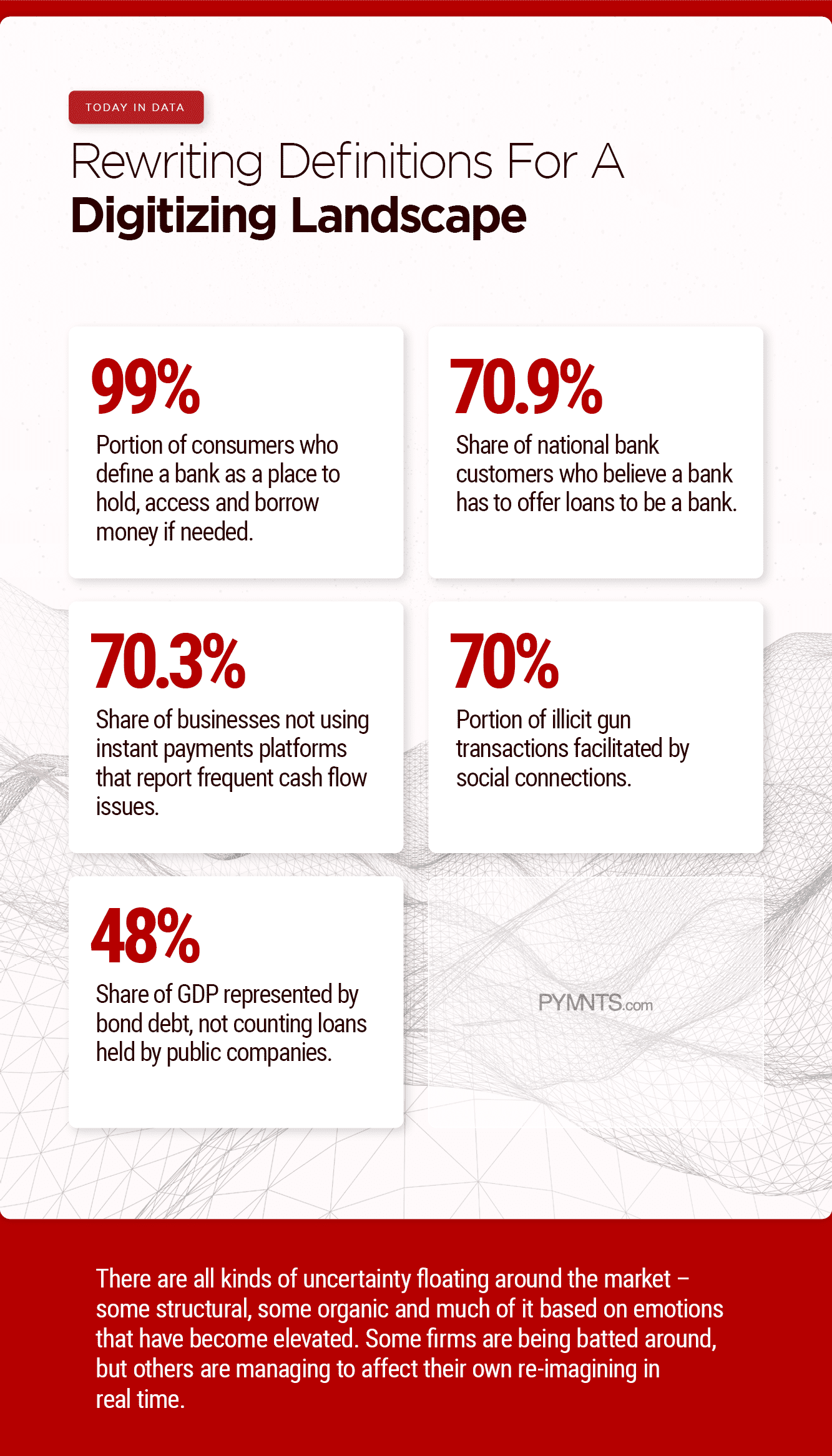
There is no shortage of questions that seem basic, but are harder to answer than they appear on first glance. What counts as a bank? When will instant payments be truly accessible, as opposed to only partially so? How can we track illegal transactions between people who know each other, and can easily and anonymously move money among themselves? And what to do with a giant pile of corporate debt – particularly as the public markets are getting bumpy? Okay, maybe that last one doesn’t look so basic from the outside. But they’re all hard to answer – and the need to find those answers is becoming increasingly pressing.
 Data:
Data:
99 percent: Portion of consumers who define a bank as a place to hold, access and borrow money if needed.
70.9 percent: Share of national bank customers who believe a bank has to offer loans to be a bank.
70.3 percent: Share of business not using instant payments platforms that report frequent cash flow issues.
70 percent: Portion of illicit gun transactions facilitated by social connections.
48 percent: Share of GDP represented by bond debt, not counting loans held by public companies.